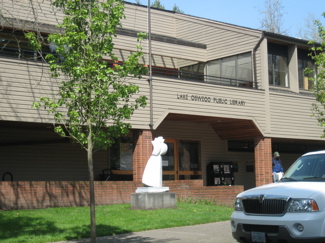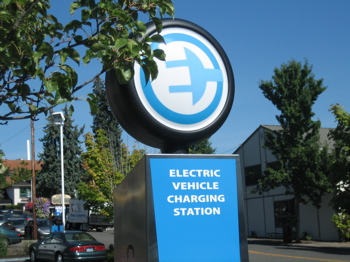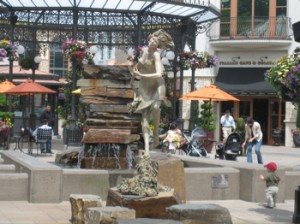Data represents activity from November 10th to November 20th.
DOM (days on market) represents cumulative days and may represent more than one listing period.
Of particular note, to me, was finding the closed sale at 2870 Park Rd. This was a 1973 built home that was described as a cosmetic fixer. With 2380 square feet, it’s a nice size home and in a very nice neighborhood, Palisades. What is remarkable is that it sold in just 4 days and for $17,000 more than the asking price. It shows that when a property is priced right it will sell quickly, and perhaps for more than the list price. Our market still has a pulse.
New Listings
Address Type bed/bath Sq. Feet List Price
44 Eagle Crest Condo 1b/1b 798 $134,900
91 Galen St Condo 1b/1b 680 $135,000
47 Eagle Crest #12 Condo 2b/1b 932 $149,900
16790 Lake Forrest Detached 2b/1b 780 $199,900
12846 Boones Ferry Rd Condo 2b/2.1b 1136 $249,000
5063 Foothills Dr Condo 2b/2b 1031 $259,000
3433 McNary Parkway Condo 2b/2.1b 1156 $275,000
3797 Lanewood Detached 3b/1b 2560 $309,000
5235 Oakridge Detached 3b/2.1b 1576 $324,900
5354 Lower Dr Detached 3b/1b 1565 $339,000
4761 LaMont Detached 3b/2b 1816 $379,900
4051 Virginia Way Detached 3b/2.1b 1658 $389,500
7050 Childs Rd Detached 2b/2b 1693 $398,000
5051 Tualata Ln Detached 4b/2b 1591 $409,900
18978 Indian Spring Cir Detached 3b/2b 1900 $414,900
1265 Rockinghorse Ln Detached 4b/3b 2402 $444,000
6109 Summer Woods Detached 4b/2.1b 2331 $449,000
1307 Cedar St Detached 4b/3b 2054 $459,900
111 3rd St Condo 2b/2b 1206 $474,900
8 Hotspur Detached 3b/2.1b 1966 $475,000
785 5th St Detached 3b/2b 2208 $480,000
805 Country Club Rd Detached 5b/2b 2722 $489,900
1009 Cumberland Pl Detached 4b/3b 2294 $525,000
19664 River Run Detached 2b/2.1b 3051 $559,900
17784 Treetop Detached 4b/3b 3468 $599,900
4676 Winthrop Ct Detached 4b/2.1b 3112 $639,900
18212 indian Creek Dr Detached 4b/2.1b 2313 $649,000
17141 Wall St. Detached 4b/3b 3540 $699,500
615 Lake Bay Ct Detached 3b/3b 2542 $699,900
19285 Megly Ct Detached 4b/2.1b 2587 $699,900
19263 Megly Ct Detached 4b/2.1b 2743 $749,900
2545 Dellwood Detached 5b/3.1b 3843 $809,900
19266 Megly Ct Detached 4b/2.1b 3025 $789,900
19245 Megly Ct Detached 4b/2.1b 2884 $789,900
4349 Lakeview Blvd Detached 3b/3b 3678 $849,000
5435 Washington Ct Detached 4b/3.1b 3323 $849,900
772 8th St Detached 4b/2.1b 3161 $899,000
17649 Woodhurst Pl Detached 5b/4.1b 5793 $899,000
3030 Westview Ct Detached 4b/2.1b 3415 $959,000
18094 Pilkington Detached 4b/3/1b 3509 $999,000
17600 Upper Cherry Detached 4b/3.1b 3867 $1,299,000
18990 Barton Rd Detached 4b/3.2b 4592 $1,369,000
2809 Arrowhead Ct Detached 3b/3b 2624 $1,699,000
18735 Bryant Rd Detached 4b/3.1b 5597 $1,750,000
3114 Douglas Circle Detached 4b/4b 5465 $2,195,000
670 Iron Mntn Blvd Detached 4b/3.2b 5208 $2,250,000
333 Northshore Rd Detached 4b/4.1b 4998 $2,650,000
3530 Lakeview Blvd Detached 4b/3.1b 4200 $2,950,000
Pending Sales
Address Type bed/bath Sq. Ft. List Price DOM Original Price
4 Touchstone Condo 2b/2b 984 $115,000 42 $125,000
44 Eaglecrest #11 Condo 3b/2b 1085 $148,700 31 $154,900
5478 Tualata Detached 3b/2b 1200 $279,000 122 $330,000
16651 Lake Forest Detached 3b/1b $1,230 $207,000 59 $350,000
4 Othello Detached 4b/3b 2184 $434,900 9 $434,900
5453 Willow Ct Detached 3b/2.1b 2400 $449,000 146 $495,000
600 Maple St Detached 4b/2.1b 2422 $499,000 126 $529,000
2584 Park Rd Detached 4b/2b 2302 $524,900 229 $679,000
435 8th St. Detached 4b/3.1b 2505 $649,900 565 $929,000
104 3rd St Detached 2b/2b 1151 $1,050,000 15 $1,050,000
Closed Sales
Address Type bed/bath Sq. Ft. Sales Price DOM Original Price
4000 Carman #35 Condo 2b/2b 869 $135,000 22 $149,900
3680 Spring Ln 2B Condo 2b/2.1b 1152 $187,000 220 $219,000
595 6th St Detached 3b/1b 1520 $257,050 40 $314,800
22 Condolea Dr Condo 2b/2b 1454 $275,000 36 $339,900
2870 Park Rd Detached 4b/2.1b 2380 $396,000 4 $379,900
13340 Auburn Ct Attached 3b/2.1b 2451 $485,000 222 $559,900
1012 Andrews Rd Detached 3b/2b 2246 $495,000 133 $590,800
16 Northview Ct Attached 4b/3.1b 2962 $495,000 419 $599,900
3240 Upper Dr Detached 4b/2.1b 3410 $712,500 56 $749,950
114 3rd St Detached 2b/1b 1140 $730,000 19 $750,000
17760 Lake Haven Dr Detached 4b/2.1b 2051 $800,000 224 $1,169,000
Thank you for your patience while we work out a couple of software issues. We hope to have our Market Action Report back in fine form ASAP.

 As you have read in several recent posts, we have a glorious fall with the trees turning colors and sunshine that is bright. It is also in the fall that the transition happens from mostly sunny days to mostly rainy days. The rain will dominate the forecast until about April. Then the transition will happen back to mostly sunny days.
As you have read in several recent posts, we have a glorious fall with the trees turning colors and sunshine that is bright. It is also in the fall that the transition happens from mostly sunny days to mostly rainy days. The rain will dominate the forecast until about April. Then the transition will happen back to mostly sunny days. Kudos to the Lake Oswego Library which was ranked the best library in the state of Oregon by the
Kudos to the Lake Oswego Library which was ranked the best library in the state of Oregon by the  I want to make sure you know about a spectacular tree on the corner of 3rd and C Avenues.
I want to make sure you know about a spectacular tree on the corner of 3rd and C Avenues. While we may currently be in turbulent economic times, I want to make it known that solid and safe mortgage options still exist.
While we may currently be in turbulent economic times, I want to make it known that solid and safe mortgage options still exist. One of the things that I always explain to anyone buying a home in Lake Oswego, and particularly a lakefront home, is that the lake has a history of routine maintenance that occasionally requires a draw down of the water level.
One of the things that I always explain to anyone buying a home in Lake Oswego, and particularly a lakefront home, is that the lake has a history of routine maintenance that occasionally requires a draw down of the water level. I was pleasantly surprised yesterday morning to find an article on the front page of the Clackamas County edition of the Oregonian featuring a story about the new electric-car, plug-in charging station that is now in Lake Oswego.
I was pleasantly surprised yesterday morning to find an article on the front page of the Clackamas County edition of the Oregonian featuring a story about the new electric-car, plug-in charging station that is now in Lake Oswego.

 Back in March I wrote a post about affordable homes in Lake Oswego. My definition of affordable were homes priced under $350,000. At the time, March 28, 2008, there were 20 houses for sale in Lake Oswego priced at $350,000 or less. I compared that number to houses in Sellwood, a close-in neighborhood in Southeast Portlnad, where at the same time there were 18 houses priced $350,000 or less. What is going on today? How has the changing market affected the availability of affordable houses?
Back in March I wrote a post about affordable homes in Lake Oswego. My definition of affordable were homes priced under $350,000. At the time, March 28, 2008, there were 20 houses for sale in Lake Oswego priced at $350,000 or less. I compared that number to houses in Sellwood, a close-in neighborhood in Southeast Portlnad, where at the same time there were 18 houses priced $350,000 or less. What is going on today? How has the changing market affected the availability of affordable houses?